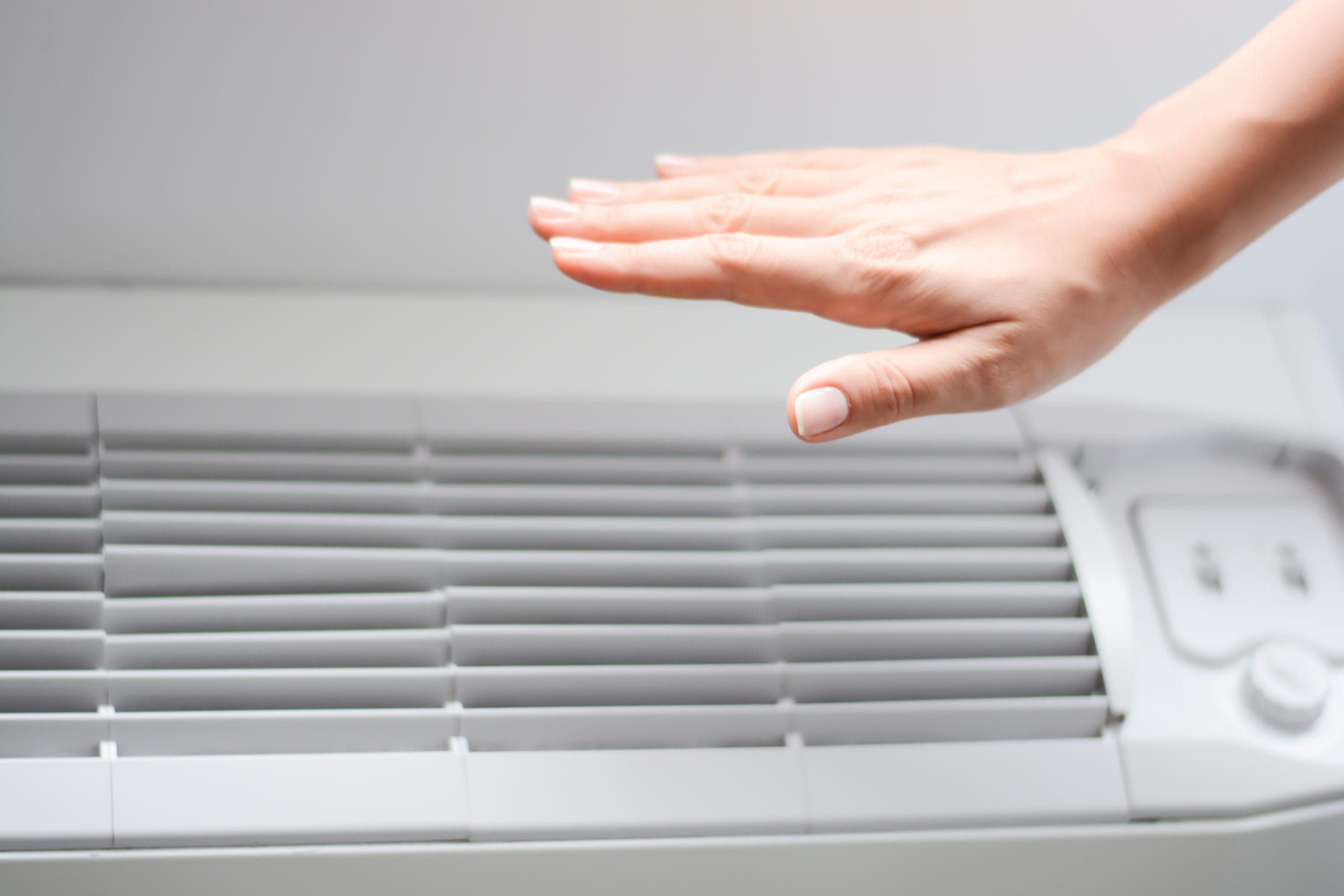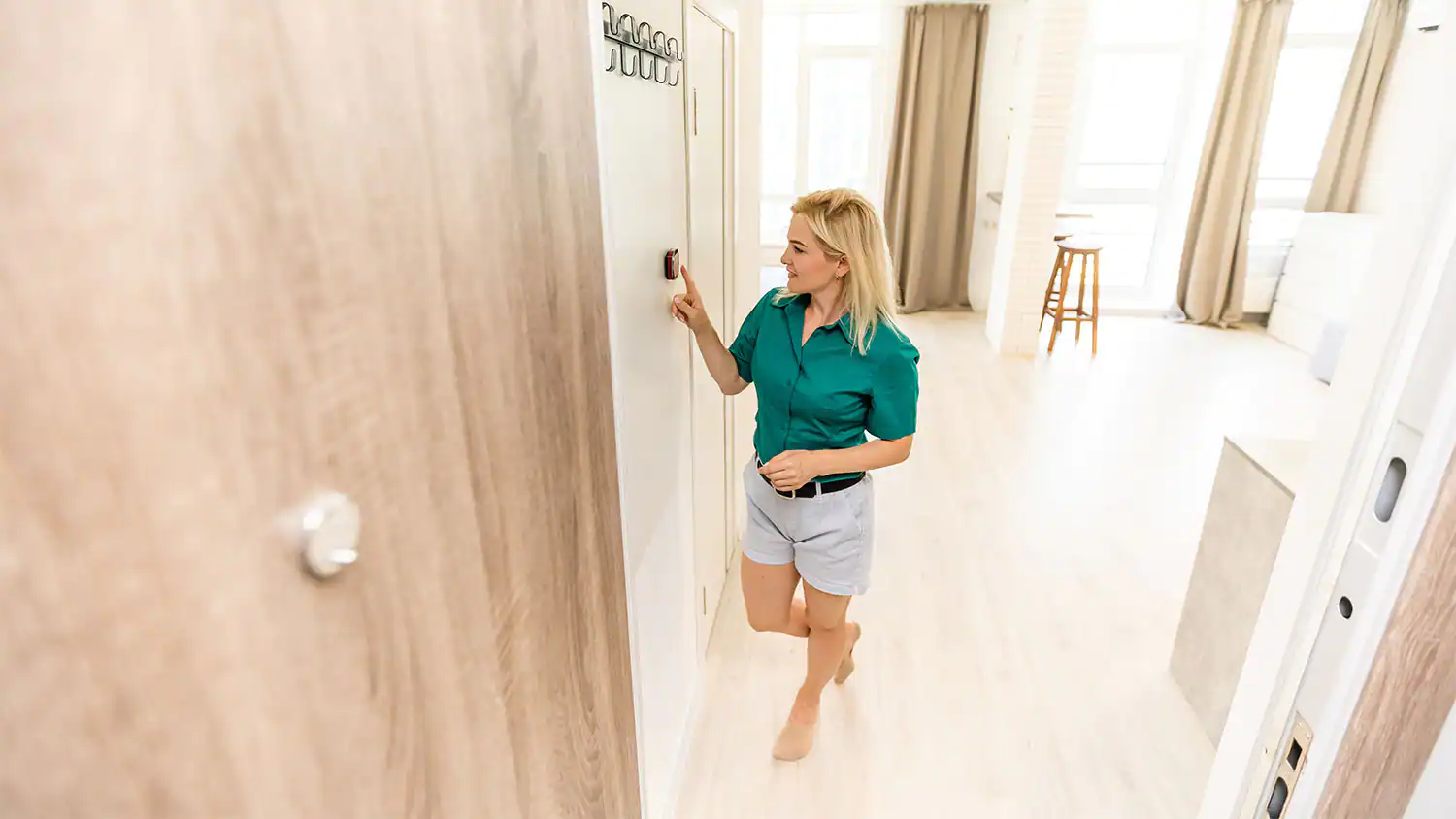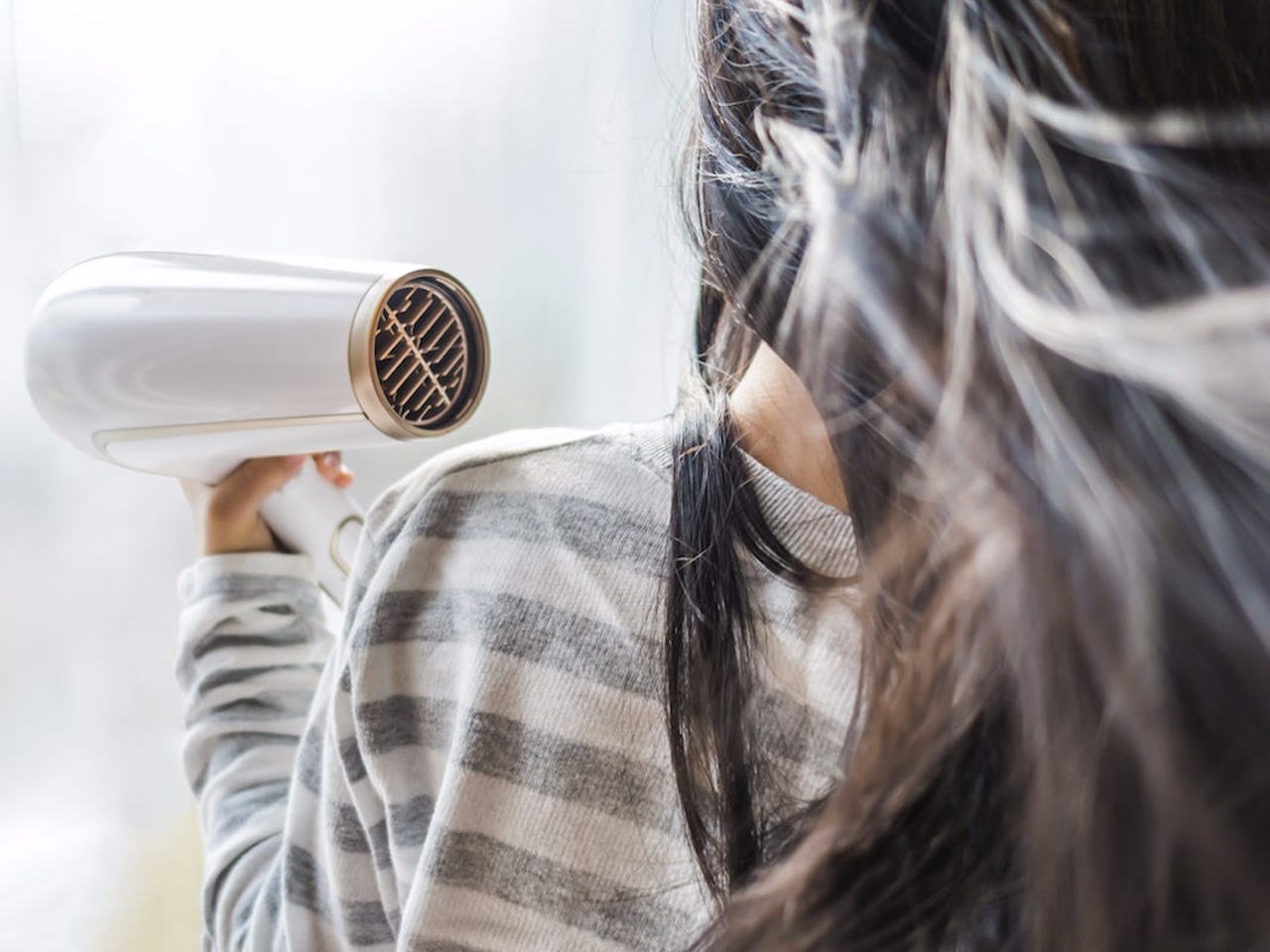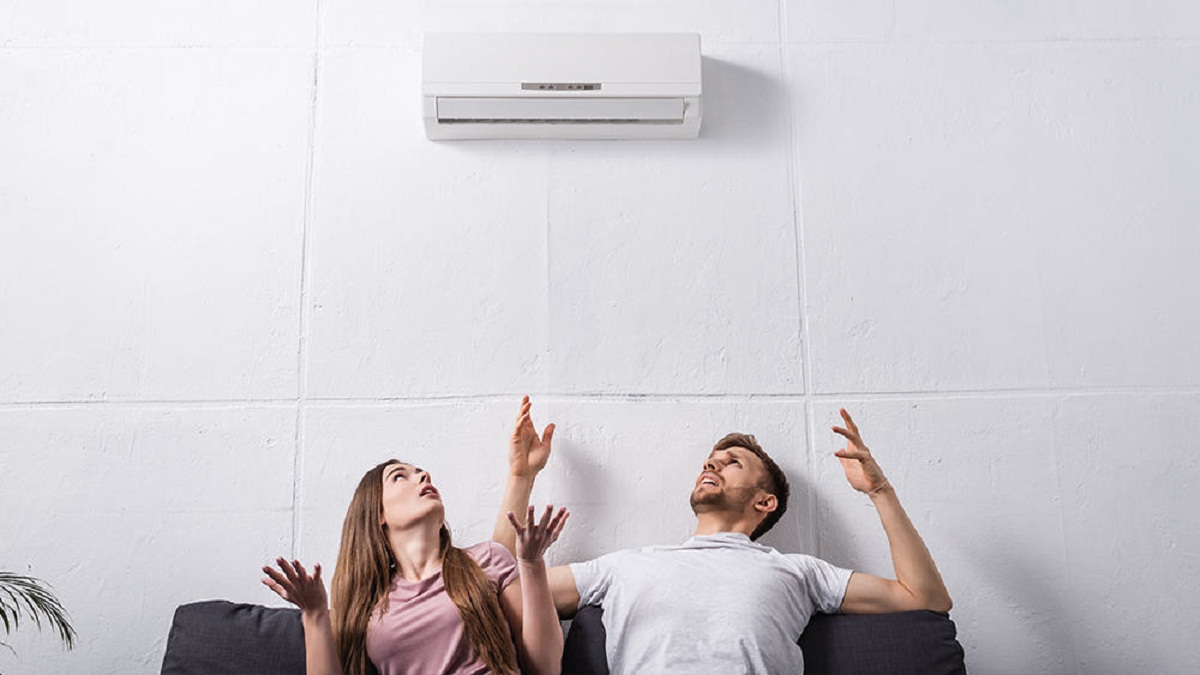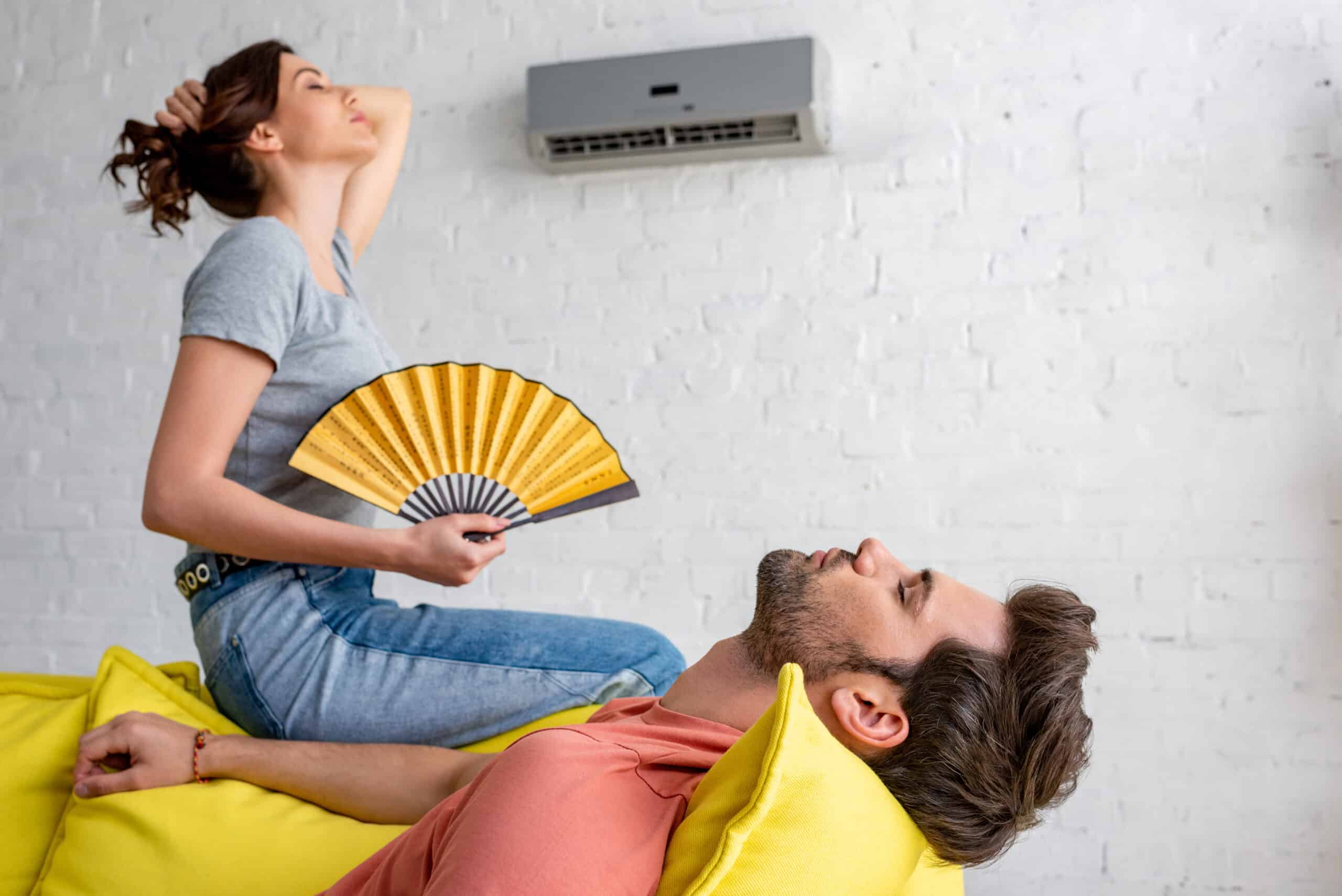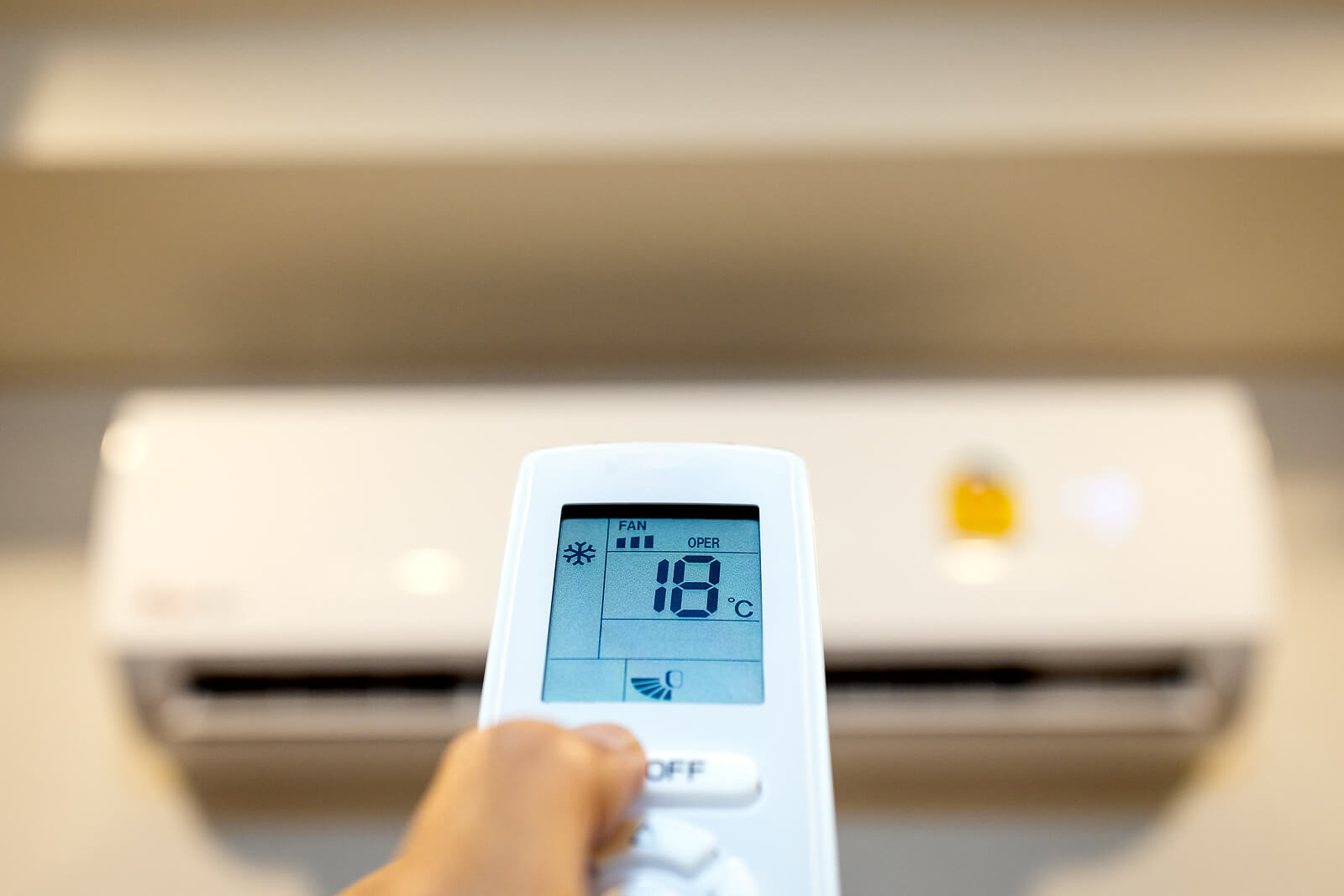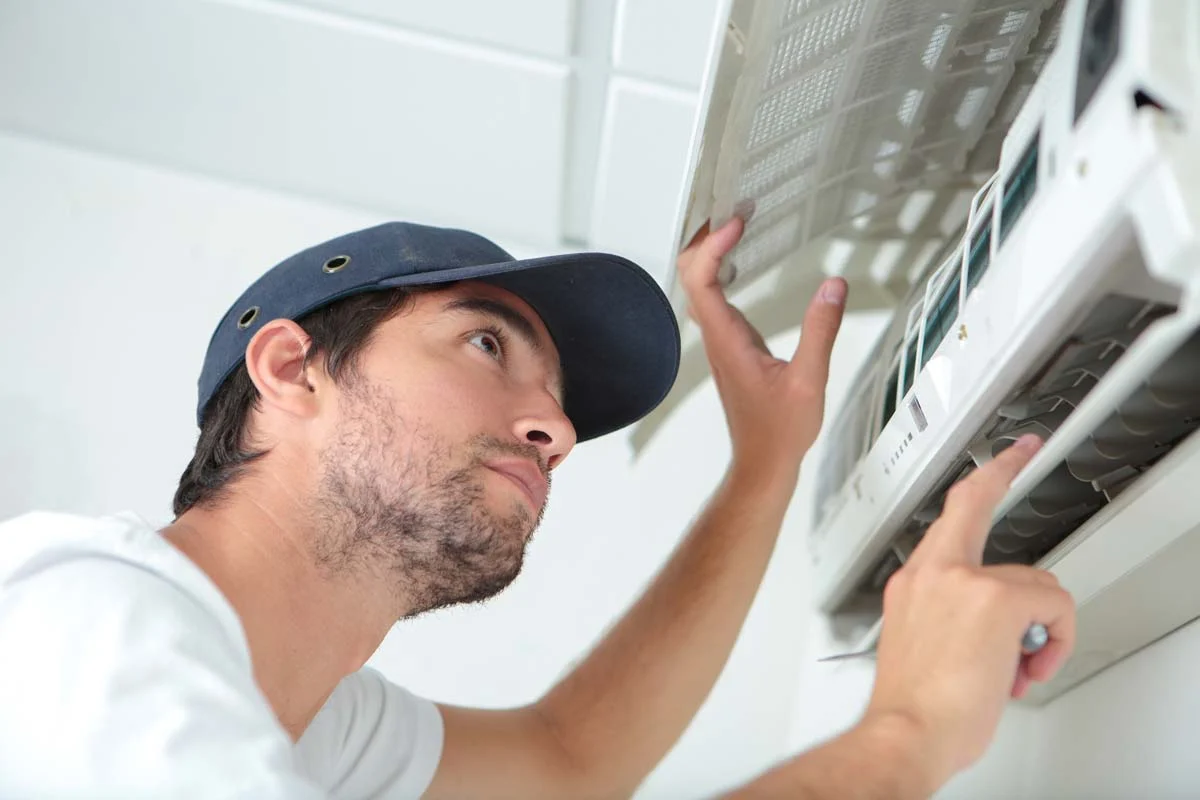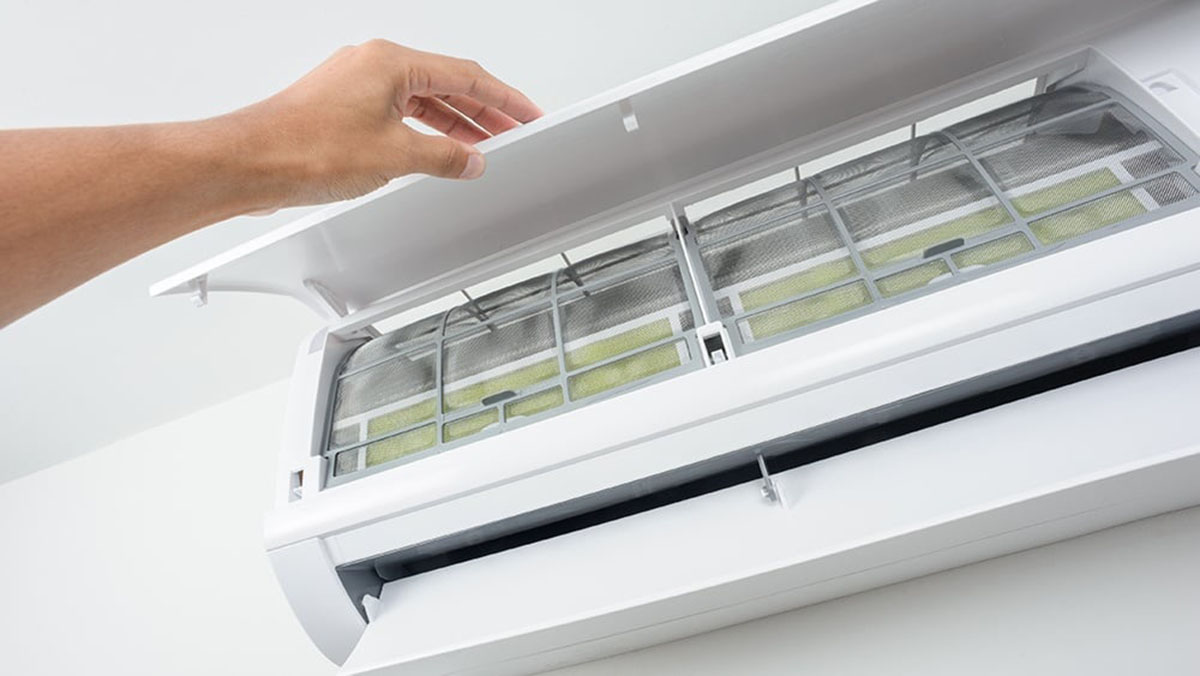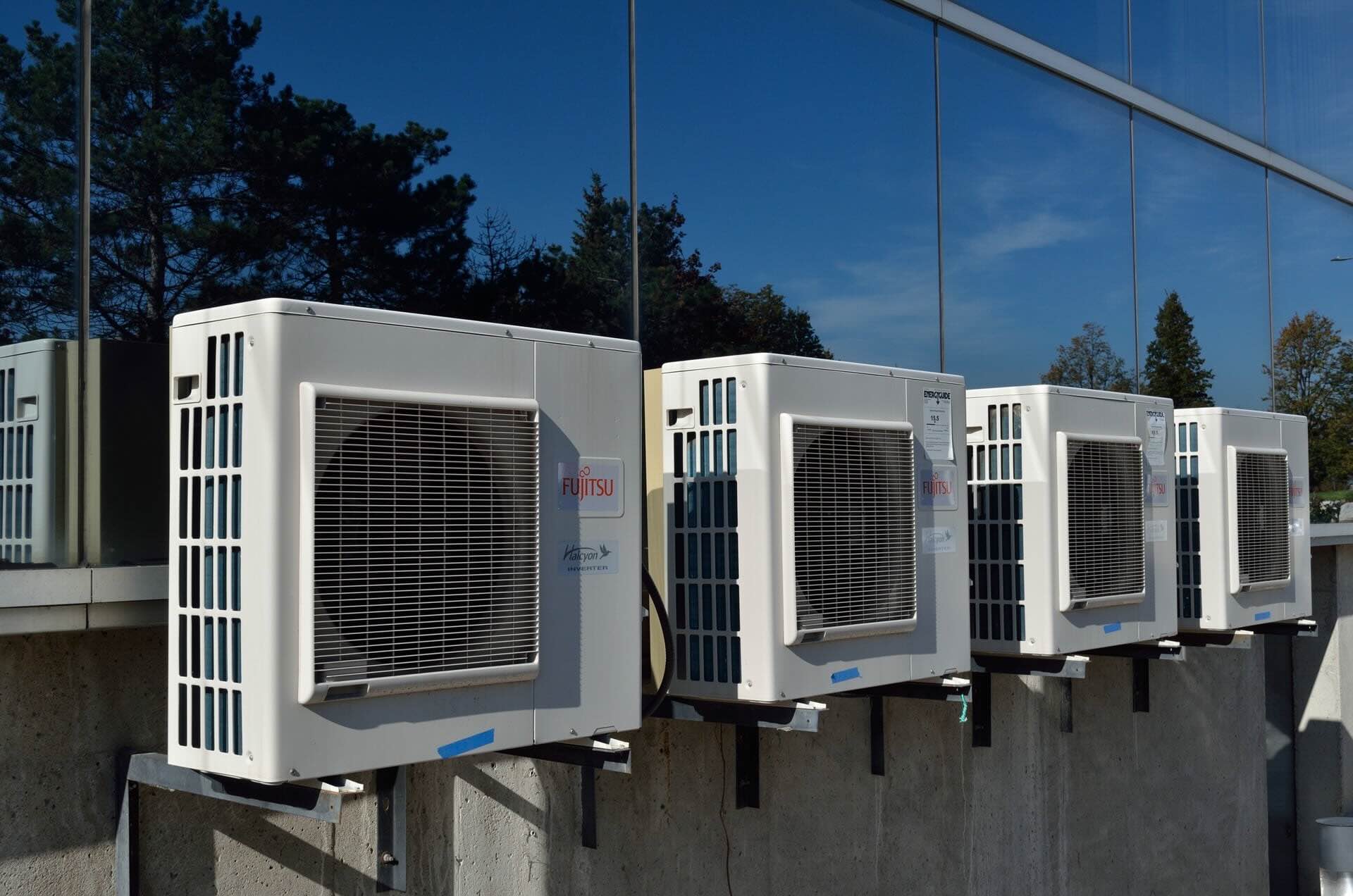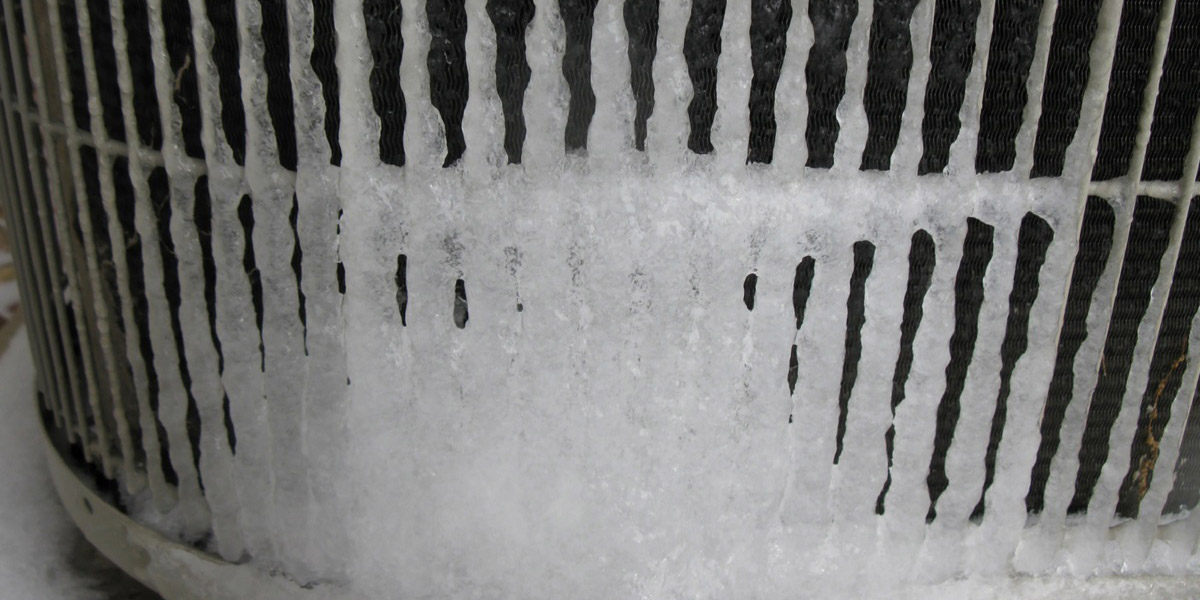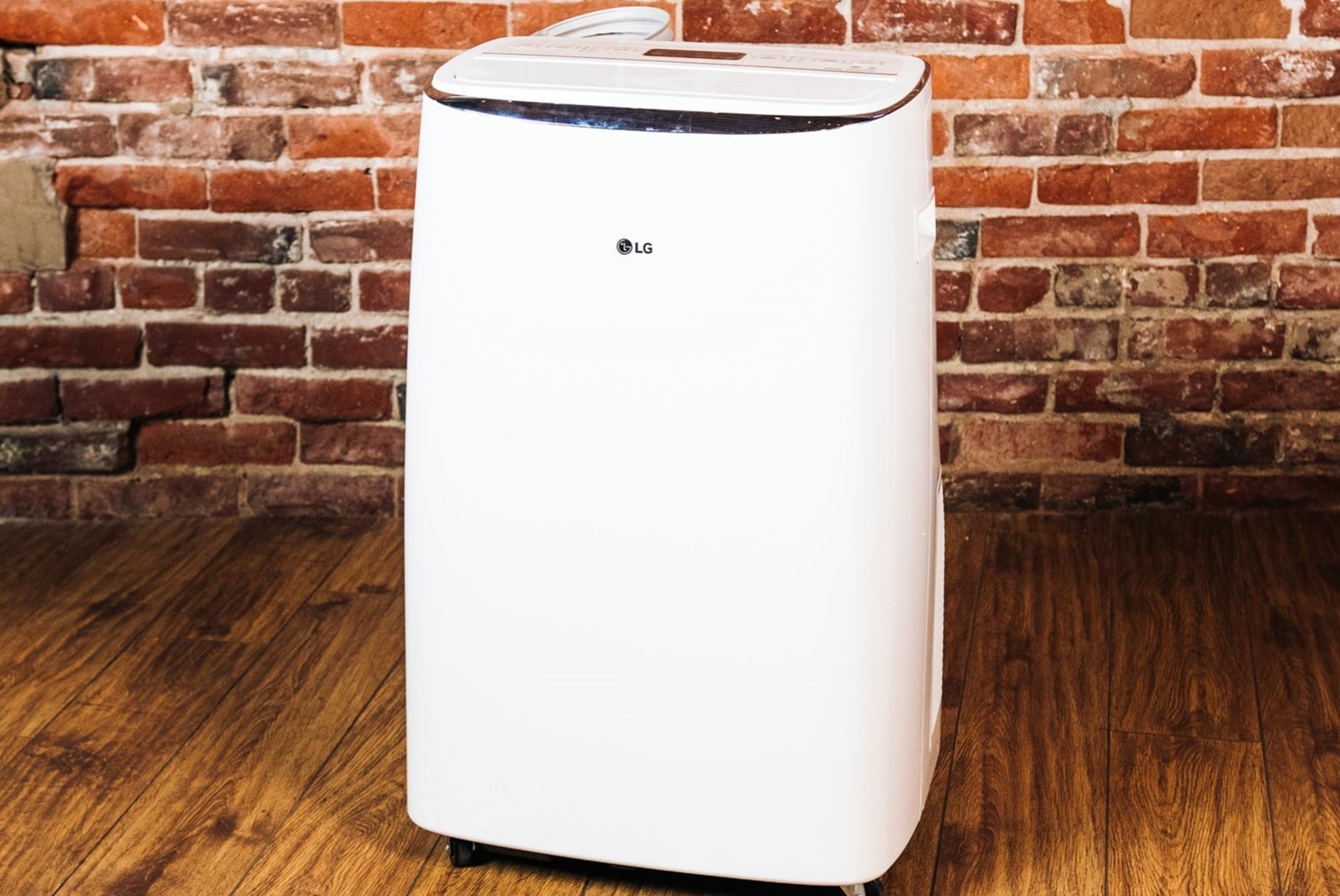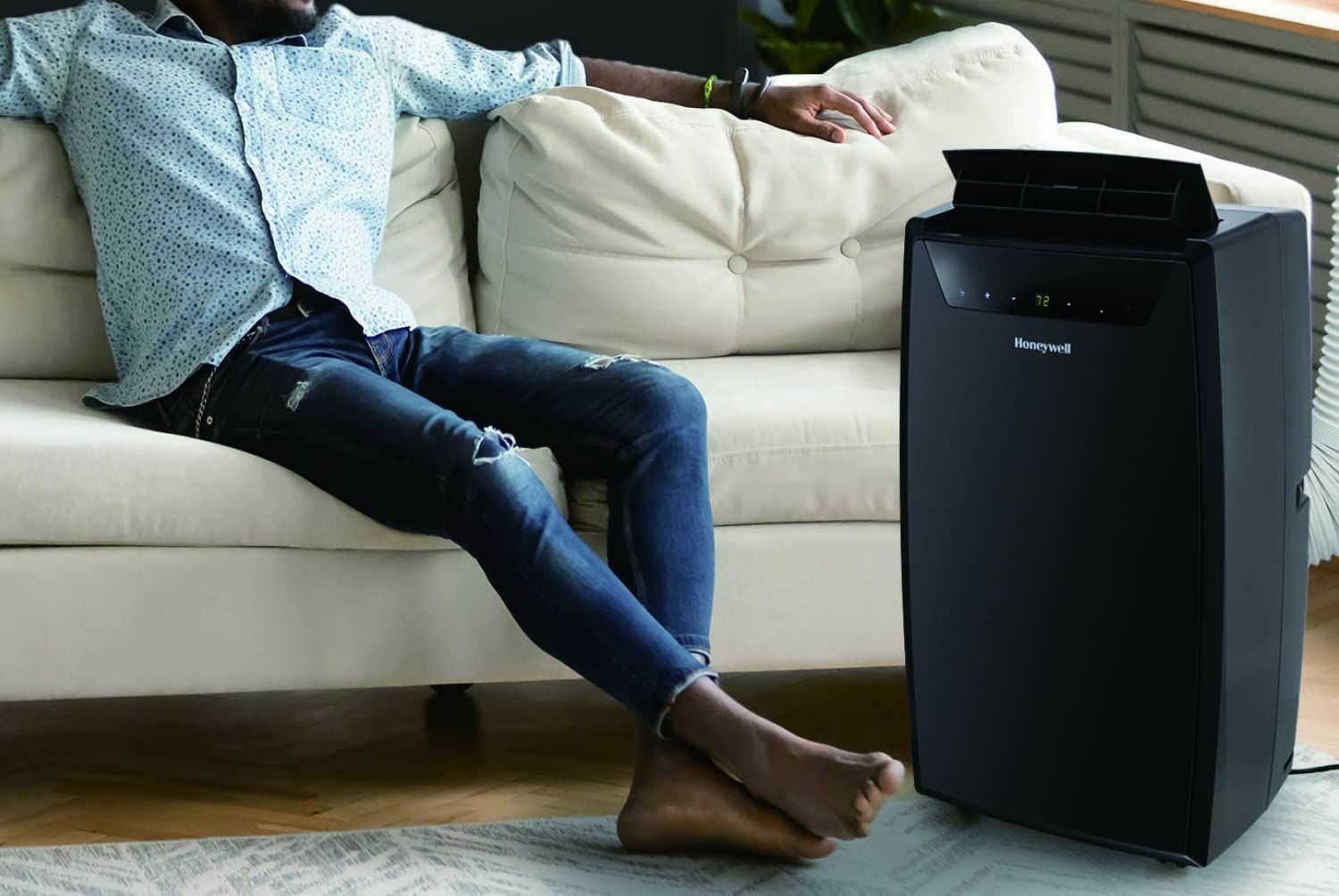Home>Home Maintenance>Why Is My Portable Air Conditioner Not Blowing Cold Air
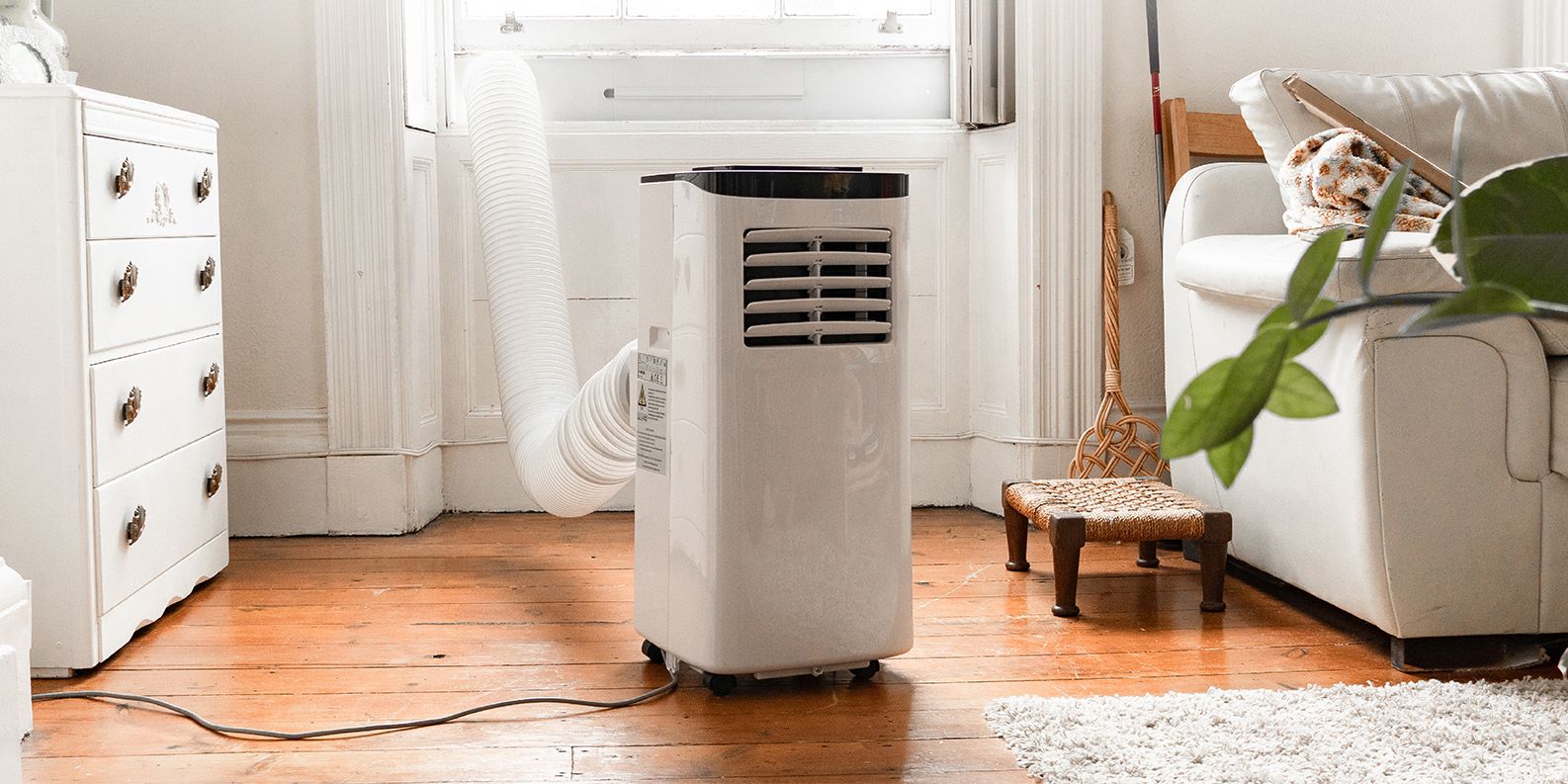

Home Maintenance
Why Is My Portable Air Conditioner Not Blowing Cold Air
Modified: March 7, 2024
Is your portable air conditioner not blowing cold air? Learn the common reasons and simple home maintenance tips to fix the issue quickly.
(Many of the links in this article redirect to a specific reviewed product. Your purchase of these products through affiliate links helps to generate commission for Storables.com, at no extra cost. Learn more)
Introduction
Having a portable air conditioner is a convenient way to keep your living space cool and comfortable during those scorching summer months. However, there may come a time when you notice that your portable air conditioner is no longer blowing cold air, leaving you feeling frustrated and hot under the collar.
There can be several reasons why your portable air conditioner is not blowing cold air. It’s important to understand these common issues and troubleshooting steps so that you can quickly fix the problem and get your air conditioner back up and running efficiently.
In this article, we will explore the most common reasons why your portable air conditioner may not be blowing cold air and provide you with valuable troubleshooting tips to help you resolve the issue.
So, let’s dive in and uncover the mysteries behind your portable air conditioner’s lack of cool air.
Key Takeaways:
- Keep your portable air conditioner blowing cold air by regularly cleaning or replacing the air filter, ensuring proper ventilation, and checking for obstructions to maintain optimal airflow.
- If your portable air conditioner is not blowing cold air, check the temperature settings, inspect for electrical malfunctions, and consider environmental factors like high ambient temperatures and excessive humidity.
Read more: Why Is My HVAC Not Blowing Cold Air
Common Reasons for Portable Air Conditioner Not Blowing Cold Air
When your portable air conditioner fails to blow cold air, it can be frustrating. However, understanding the common reasons behind this issue can help you troubleshoot and resolve the problem effectively. Here are some of the most frequent causes:
- Incorrect Temperature Settings: One of the simpler explanations for your portable air conditioner not cooling the air is incorrect temperature settings. Make sure you have set the temperature to a lower level that corresponds to your desired cooling.
- Air Filter Issues: Air filters play a crucial role in the proper functioning of your portable air conditioner. If the filters are dirty or clogged, they can restrict airflow and hinder the cooling process. Clean or replace the filters regularly to ensure optimum performance.
- Insufficient Airflow: Insufficient airflow can be caused by various factors, such as a blockage in the air ducts, obstructions around the unit, or a malfunctioning fan. Check for any obstructions and ensure that the fan is operating correctly.
- Inadequate Ventilation: Portable air conditioners require proper ventilation to function effectively. If the exhaust hose is not properly installed or if there isn’t enough space around the unit for proper airflow, it can lead to reduced cooling performance. Ensure that the venting system is set up correctly and that there is sufficient clearance around the unit.
- Low Refrigerant Levels: Refrigerant is responsible for cooling the air in your air conditioner. If there is a refrigerant leak or if the levels are low, your air conditioner will struggle to produce cold air. It’s best to contact a professional technician to identify and fix any refrigerant-related issues.
- Condenser Unit Problems: The condenser unit is responsible for dissipating heat from the air conditioner. If it is dirty or damaged, it can impair the cooling process. Regularly clean the condenser coils and ensure that the unit is free from any obstructions.
- Faulty Compressor: The compressor is the heart of the air conditioning system, and any issues with it can prevent your air conditioner from blowing cold air. If you suspect a faulty compressor, it’s best to seek professional help for repair or replacement.
- Electrical Malfunctions: Electrical problems, such as a tripped circuit breaker or a faulty power cord, can disrupt the functioning of your portable air conditioner. Check the power supply, cords, and connections to ensure they are in proper working condition.
- Environmental Factors: High ambient temperatures or excessive humidity can reduce the cooling efficiency of your portable air conditioner. It may have to work harder to cool the air under such conditions, resulting in limited cold airflow.
- Unit Size and BTU Mismatch: Using a portable air conditioner that is too small for the room size or has an inadequate BTU rating can lead to insufficient cooling. Ensure that you’re using the appropriate size and BTU rating for your specific cooling needs.
By understanding these common reasons, you can identify the potential cause of your portable air conditioner’s cooling issues. Next, let’s explore some troubleshooting steps to help you resolve the problem.
Incorrect Temperature Settings
One of the simplest explanations for your portable air conditioner not blowing cold air is incorrect temperature settings. It’s important to ensure that you have set the desired temperature to a lower level for cooling.
Start by checking the temperature settings on your portable air conditioner. It’s common for users to overlook this simple step and accidentally set the temperature too high, resulting in warm air blowing instead of cold.
Refer to the user manual or control panel of your portable air conditioner to adjust the temperature settings correctly. Set the temperature to a level that corresponds to your cooling needs and preferences. Typically, a temperature between 68°F and 78°F (20°C and 26°C) is recommended for a comfortable indoor environment.
Once you have adjusted the temperature settings, give your portable air conditioner some time to adjust and cool the air. It may take a while for the unit to reach the desired temperature and start blowing cold air.
In addition to temperature settings, be mindful of other cooling modes or features that your portable air conditioner may have. Some units offer options such as “Eco” or “Sleep” modes, which may prioritize energy efficiency over maximum cooling. Make sure you are aware of the specific features and settings of your unit to optimize its cooling performance.
If you have confirmed that the temperature settings are correct and your portable air conditioner is still not blowing cold air, it’s time to move on to troubleshooting other potential issues.
Air Filter Issues
Air filters play a crucial role in the proper functioning of your portable air conditioner. If the air filter is dirty or clogged, it can restrict airflow and hinder the cooling process. Checking and maintaining your air filter is essential for optimal cooling performance.
First, locate the air filter in your portable air conditioner. The air filter is typically located behind a front panel or grille. Refer to the user manual for specific instructions on how to access and remove the filter.
Inspect the air filter for any buildup of dust, dirt, or debris. If the filter appears dirty, it needs to be cleaned or replaced. Cleaning methods vary depending on the type of filter your unit uses. Some filters are reusable and can be washed with water and mild soap, while others are disposable and need to be replaced with a new one.
If the filter is washable, gently rinse it under running water to remove dust and debris. Be careful not to damage the filter while cleaning. Allow the filter to dry completely before reinstalling it in the unit.
For disposable filters, remove the old filter and dispose of it properly. Replace it with a new filter that fits your unit’s specifications. Ensure that the new filter is installed correctly and securely to maintain proper airflow.
Regularly cleaning or replacing the air filter is recommended every 2-4 weeks, depending on usage and the environment. This helps to prevent a buildup of dust and maintains good airflow throughout the unit.
By keeping the air filter clean, you can ensure proper and efficient cooling performance from your portable air conditioner. If the air filter is clean, but your unit still fails to blow cold air, continue troubleshooting other potential causes.
Insufficient Airflow
Insufficient airflow can be a common cause of your portable air conditioner not blowing cold air. When there is inadequate airflow, the cooling efficiency of the unit is compromised. Several factors can contribute to insufficient airflow, including blockages, obstructions, or a malfunctioning fan.
Start by checking for any blockages or obstructions around the air intake and outlet vents of your portable air conditioner. Ensure that there are no objects, furniture, or curtains obstructing the airflow. Clear away any debris, dust, or pet hair that may be blocking the vents.
If the vents appear to be clear, check the fan of the air conditioner. Make sure it is spinning properly and not obstructed by any debris. If the fan is not functioning correctly, it can result in inadequate airflow. Contact a professional technician to repair or replace the fan if needed.
In some cases, the problem might be with the air ducts in your home. If there are blockages or restrictions in the air ducts, it can limit the airflow to your portable air conditioner. Inspect the air ducts for any obstructions, such as excessive dust, debris, or a buildup of mold. Consider hiring a professional duct cleaning service to thoroughly clean and clear the ducts.
Another factor to consider is the position and placement of your portable air conditioner. Ensure that the unit is placed in a location that allows for proper airflow. Avoid placing the unit directly against a wall or furniture that may impede the flow of air. Additionally, make sure there is sufficient clearance around the unit for optimal airflow.
If you have addressed the airflow issues but your portable air conditioner still fails to blow cold air, proceed to troubleshoot other potential causes to identify the root of the problem.
Inadequate Ventilation
Inadequate ventilation can contribute to your portable air conditioner not blowing cold air. Proper ventilation is essential for the optimal performance of your unit, as it allows for the efficient exchange of hot and cold air.
The first step is to check the exhaust hose of your portable air conditioner. Ensure that it is properly installed and securely connected to the unit. The exhaust hose is responsible for venting the hot air generated during the cooling process to the outside. If the hose is kinked, damaged, or disconnected, it can impede the airflow and decrease the cooling efficiency.
Inspect the exhaust hose for any obstructions such as accumulated dirt, debris, or lint. Clean out any blockages gently using a soft brush or cloth. If the hose is damaged, replace it with a new one that matches the specifications of your unit. Straighten any kinks in the hose to ensure smooth airflow.
It’s also important to consider the placement of the exhaust hose. Make sure it is directed away from obstructions such as walls, furniture, or curtains that could restrict the air flow. Ensure that there is sufficient clearance around the exhaust hose for proper ventilation.
In addition to the exhaust hose, check if there are any blockages or restrictions in the ventilation system of your home. If the hot air expelled by the air conditioner is trapped or hindered due to a blocked vent or duct, it can affect the cooling efficiency of your unit. Inspect the vents and ducts to ensure they are clear from any debris or obstructions. If necessary, hire a professional duct cleaning service to clean and clear the ducts.
Proper ventilation is crucial for the optimum operation of your portable air conditioner. By ensuring that the exhaust hose is properly installed, clear of blockages, and directed away from obstructions, you can help resolve any inadequacies in ventilation and improve the cooling performance of your unit.
Low Refrigerant Levels
Low refrigerant levels can be a common cause of your portable air conditioner not blowing cold air. Refrigerant is the substance responsible for cooling the air in the unit. If there is a refrigerant leak or if the levels are low, it can result in insufficient cooling.
If you suspect low refrigerant levels, it is best to contact a professional technician to properly diagnose and address the issue. They have the expertise and equipment to check for refrigerant leaks and recharge the system if necessary.
Signs of low refrigerant levels include decreased cooling performance, longer cooling cycles, and ice buildup on the coils. If you notice any of these signs, it’s important not to attempt to handle the refrigerant yourself. Refrigerant is a controlled substance and should only be handled by qualified professionals.
The technician will first check for any leaks in the system and repair them if necessary. Once the leaks are sealed, they will recharge the system with the appropriate amount of refrigerant. It’s important to note that simply adding refrigerant without addressing the leaks will result in a temporary fix, as the refrigerant will continue to escape.
Regular maintenance and inspections by a professional can help identify and repair refrigerant leaks early on, preventing further damage to your portable air conditioner. They can also ensure that the refrigerant levels are optimal for efficient cooling.
Remember, handling refrigerant requires specialized knowledge and equipment. It is always best to leave this task to qualified technicians to ensure safety and proper functioning of your portable air conditioner.
Check the air filter and clean or replace it if it’s dirty. A clogged filter can restrict airflow and cause the unit to not blow cold air.
Condenser Unit Problems
The condenser unit plays a crucial role in the cooling process of your portable air conditioner. It is responsible for dissipating heat from the air conditioner, allowing it to produce cold air. If the condenser unit is dirty or damaged, it can impair the cooling performance of your unit.
Regularly inspect the condenser unit for any signs of dirt, dust, or debris buildup. Over time, these particles can accumulate on the condenser coils and hinder the heat dissipation process. Use a soft brush or vacuum cleaner with a brush attachment to gently clean the coils. Be careful not to damage the delicate fins of the condenser coil while cleaning.
In addition to cleaning, ensure that there are no obstructions around the condenser unit. Remove any objects, leaves, or debris that may be blocking the airflow. Proper airflow is crucial for the efficient operation of the condenser unit and overall cooling performance.
If you notice any physical damage to the condenser unit, such as bent fins or leaks, it’s best to contact a professional technician for repair or replacement. Damaged condenser coils can affect the refrigerant circulation and hinder the cooling process.
Regular maintenance and cleaning of the condenser unit will ensure optimal cooling performance from your portable air conditioner. By keeping the condenser unit in good condition, you can improve the heat dissipation process and enhance the overall efficiency of your unit.
Faulty Compressor
The compressor is the heart of your portable air conditioner and is responsible for circulating refrigerant and compressing it to facilitate the cooling process. If the compressor is faulty or not functioning properly, it can result in your unit not blowing cold air.
If you suspect a faulty compressor, it is best to seek the assistance of a professional technician to diagnose and address the issue. They have the expertise and tools necessary to assess the condition of the compressor and determine the appropriate course of action.
Signs of a faulty compressor include unusual noises, such as grinding or buzzing sounds, frequent cycling on and off, or a complete lack of cooling despite other troubleshooting measures. These symptoms indicate that the compressor may be experiencing mechanical or electrical issues.
Repairing or replacing a faulty compressor is a complex task that should only be performed by trained professionals. They will assess the condition of the compressor and determine if it can be repaired or if a replacement is necessary.
It’s worth noting that a faulty compressor can sometimes be a symptom of other underlying issues, such as refrigerant leaks or electrical problems. A professional technician will thoroughly inspect your portable air conditioner to identify and address any other related issues to ensure a lasting solution.
Remember, attempting to repair or replace a compressor without proper knowledge and experience can result in further damage or injury. Always rely on qualified professionals for compressor-related repairs to ensure the safety and functionality of your portable air conditioner.
Read more: Why Is My Window AC Not Blowing Cold Air
Electrical Malfunctions
Electrical malfunctions can be a common cause of your portable air conditioner not blowing cold air. Issues such as tripped circuit breakers, faulty power cords, or problems with the electrical connections can disrupt the functioning of your unit.
Start by checking the power supply to your portable air conditioner. Make sure that the unit is securely connected to a functioning power outlet. Verify that the power cord is not damaged or frayed. If you suspect a faulty power cord, it’s best to replace it with a new one that matches the specifications of your unit.
If your portable air conditioner is connected to an extension cord or power strip, ensure that it can handle the electrical load of your unit. Using an inadequate extension cord or power strip may result in insufficient power supply, leading to the unit not blowing cold air. It’s preferable to plug the unit directly into a dedicated outlet.
Check the circuit breaker or fuse box to see if any breakers have tripped or fuses have blown. If a breaker has tripped, reset it by flipping it to the “on” position. Replace any blown fuses with new ones of the same rating.
In some cases, the electrical malfunctions may be within the internal wiring or control board of your portable air conditioner. These issues require professional assistance for diagnosis and repair. It’s recommended to contact a qualified technician or the manufacturer for further guidance.
It’s important to prioritize safety when dealing with electrical malfunctions. If you’re not confident in handling electrical components or troubleshooting electrical issues, it’s best to seek professional help to avoid any potential hazards.
By ensuring a proper electrical connection and resolving any electrical malfunctions, you can restore the normal cooling function of your portable air conditioner.
Environmental Factors
Environmental factors can have a significant impact on the cooling performance of your portable air conditioner. High ambient temperatures, excessive humidity, and other external conditions can affect its ability to blow cold air effectively.
It’s important to understand that portable air conditioners are designed to operate within certain temperature and humidity ranges. Operating the unit outside of these ranges can result in reduced cooling efficiency.
In areas with extremely high ambient temperatures, such as during heatwaves, your portable air conditioner may struggle to cool the air effectively. This is because the unit needs to work harder to lower the temperature in the room. In such cases, it may take longer for the air conditioner to reach and maintain the desired temperature.
Excessive humidity can also impact the cooling performance of your portable air conditioner. High humidity levels make it harder for the unit to remove moisture from the air, resulting in a less efficient cooling process. Consider using a dehumidifier in conjunction with your portable air conditioner to reduce humidity and enhance the cooling effect.
In addition to temperature and humidity, other environmental factors like direct sunlight and nearby heat sources can affect the cooling performance of your unit. If the unit is exposed to direct sunlight, it can increase the temperature of the air entering the unit, making it more challenging to cool. Locate the unit in a shaded area or use curtains or blinds to block out sunlight.
Similarly, heat-emitting devices like lamps, televisions, or appliances can generate additional heat in the room, making it more difficult for the portable air conditioner to cool the space effectively. Keep these heat sources away from the unit to improve its cooling efficiency.
By being mindful of these environmental factors and taking appropriate measures, such as shading the unit, reducing humidity, and minimizing heat sources, you can optimize the cooling performance of your portable air conditioner.
Unit Size and BTU Mismatch
One often overlooked factor that can cause your portable air conditioner to not blow cold air is a mismatch between the unit size and BTU (British Thermal Unit) capacity and the size of the room or area you are trying to cool.
Portable air conditioners come in different sizes and have varying BTU ratings, which indicate their cooling capacity. It’s important to choose a unit with the appropriate BTU rating for the space you intend to cool.
If you select a portable air conditioner with a BTU rating that is too low for the room size, the unit may struggle to cool the space adequately. On the other hand, if the BTU rating is too high for the room, the unit may cycle on and off rapidly, resulting in inadequate dehumidification and inefficient cooling.
To determine the appropriate BTU rating for your cooling needs, consider the square footage of the room. Generally, for every 10 square feet, you will need approximately 1,000 BTUs. However, factors such as room orientation, insulation, and heat-generating appliances should also be taken into account.
If you find that your portable air conditioner is not blowing cold air and suspect a mismatch in BTU capacity, it’s best to consult the manufacturer’s guidelines or seek professional advice. They can help you determine if the unit size and BTU rating are appropriate for your specific cooling requirements.
Choosing the right-sized unit and BTU capacity will ensure effective cooling and energy efficiency, allowing your portable air conditioner to operate optimally and provide the desired cooling comfort.
Troubleshooting Steps for a Portable Air Conditioner Not Blowing Cold Air
If your portable air conditioner is not blowing cold air, there are several troubleshooting steps you can take to identify and potentially resolve the issue. Here are some steps to follow:
- Check temperature settings: Ensure that the temperature settings on your portable air conditioner are set to a lower level for cooling. Adjust the temperature as needed.
- Clean or replace the air filter: A dirty or clogged air filter can restrict airflow and hinder cooling performance. Clean or replace the air filter regularly to maintain optimal airflow.
- Inspect for obstructions: Check for any blockages or obstructions around the air intake and outlet vents. Clear away any debris or objects that may be obstructing airflow.
- Ensure proper ventilation: Make sure the exhaust hose is properly installed and not kinked or damaged. Check for proper clearance around the unit to allow for adequate ventilation.
- Check refrigerant levels: Low refrigerant levels can result in insufficient cooling. Contact a professional technician to check for leaks and recharge the system if necessary.
- Clean the condenser unit: Regularly clean the condenser coils and ensure there are no obstructions. A dirty or damaged condenser can impact cooling efficiency.
- Inspect the compressor: If you suspect a faulty compressor, seek professional assistance for diagnosis and repair. A faulty compressor can prevent the unit from producing cold air.
- Check for electrical malfunctions: Ensure proper power supply and check for tripped circuit breakers or blown fuses. Replace faulty power cords and seek professional help for electrical issues.
- Consider environmental factors: High ambient temperatures, excessive humidity, or other environmental factors can affect cooling performance. Adjust for these factors as much as possible.
- Verify unit size and BTU rating: Make sure the portable air conditioner is appropriately sized for the room and has the correct BTU capacity. A mismatch can lead to inadequate cooling.
By following these troubleshooting steps, you can identify and potentially resolve the issue causing your portable air conditioner to not blow cold air. However, if the problem persists or requires professional expertise, it’s recommended to seek assistance from a qualified technician to ensure the proper functioning and performance of your unit.
Read more: Why Is My Car AC Not Blowing Cold Air
Conclusion
A portable air conditioner not blowing cold air can be a frustrating experience, especially during hot summer months. However, by understanding the common reasons behind this issue and following the appropriate troubleshooting steps, you can often identify and resolve the problem.
We explored various potential causes, including incorrect temperature settings, air filter issues, insufficient airflow, inadequate ventilation, low refrigerant levels, condenser unit problems, faulty compressors, electrical malfunctions, environmental factors, and unit size and BTU mismatches.
It’s important to start with simple steps, such as checking temperature settings and cleaning or replacing the air filter. These basic maintenance tasks can often resolve minor cooling issues.
If those steps don’t solve the problem, you can delve deeper into potential issues, such as inspecting airflow and ventilation, checking refrigerant levels, cleaning condenser units, addressing faulty compressors, troubleshooting electrical malfunctions, considering environmental factors, and verifying unit size and BTU ratings.
However, it’s important to remember that handling complex issues, such as refrigerant leaks or compressor problems, should be left to trained professionals. Attempting repairs without the necessary knowledge and expertise can lead to further damage or safety hazards.
By following these troubleshooting steps and seeking professional assistance when needed, you can increase the chances of restoring your portable air conditioner’s cooling functionality and enjoying a comfortable indoor environment.
Regular maintenance and monitoring of your portable air conditioner can also prevent future issues. Keep up with cleaning filters, checking for obstructions, and ensuring proper ventilation to maintain the efficiency of your unit.
Remember, when in doubt, consult the user manual provided by the manufacturer or contact their customer support for specific troubleshooting guidance tailored to your portable air conditioner model.
With a little patience and diligence, you can troubleshoot and resolve many common issues that prevent your portable air conditioner from blowing cold air, ensuring a refreshing and cool atmosphere in your living space during those hot summer days.
Frequently Asked Questions about Why Is My Portable Air Conditioner Not Blowing Cold Air
Was this page helpful?
At Storables.com, we guarantee accurate and reliable information. Our content, validated by Expert Board Contributors, is crafted following stringent Editorial Policies. We're committed to providing you with well-researched, expert-backed insights for all your informational needs.
